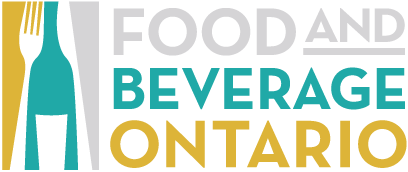News Release
Ontario Enacts Provincial Emergency and Stay-at-Home Order
April 7, 2021
Additional measures needed to protect health system capacity and save lives during third wave of COVID-19
TORONTO — The Ontario government, in consultation with the Chief Medical Officer of Health and other health experts, is immediately declaring a third provincial emergency under s 7.0.1 (1) of the Emergency Management and Civil Protection Act (EMPCA). These measures are being taken in response to the rapid increase in COVID-19 transmission, the threat on the province's hospital system capacity, and the increasing risks posed to the public by COVID-19 variants.
Details were provided today by Premier Doug Ford, Christine Elliott, Deputy Premier and Minister of Health, Solicitor General Sylvia Jones, and Dr. David Williams, Chief Medical Officer of Health.
"The Covid-19 situation is at a critical stage and we must act quickly and decisively to stay ahead of these deadly new variants," said Premier Ford. "By imposing these strict new measures we will keep people safe while allowing our vaccination program to reach more people, starting with our high risk population and identified hot spots. Although this is difficult, I urge everyone to follow these public health measures and together we will defeat this deadly virus."
Case rates, hospitalizations, and ICU occupancy are increasing rapidly, threatening to overwhelm the health care system. The number of COVID-19 hospitalizations in the province have increased by 28.2 per cent between the period of March 28 and April 5, 2021. In addition, between March 28 and April 5, 2021, Ontario has seen the number of COVID-19 patients in intensive care escalate by 25 per cent. While every action possible is being taken to increase capacity and continue daily surgeries and procedures, the province is reaching a tipping point.
Effective Thursday, April 8, 2021 at 12:01 a.m., the government is issuing a province-wide Stay-at-Home order requiring everyone to remain at home except for essential purposes, such as going to the grocery store or pharmacy, accessing health care services (including getting vaccinated), for outdoor exercise , or for work that cannot be done remotely. As Ontario's health care capacity is threatened, the Stay-at-Home order, and other new and existing public health and workplace safety measures will work to preserve public health system capacity, safeguard vulnerable populations, allow for progress to be made with vaccinations and save lives.
Retail
In addition, the province is also strengthening public health and workplace safety measures for non-essential retail under the provincewide emergency brake. Measures include, but are not limited to:
Limiting the majority of non-essential retailers to only operate for curbside pick-up and delivery, via appointment, between the hours of 7 a.m. and 8 p.m., with delivery of goods to patrons permitted between 6:00 am and 9:00 pm, and other restrictions;
Restricting access to shopping malls to limited specified purposes, including access for curbside pick-up and delivery, via appointment, with one single designated location inside the shopping mall, and any number of designated locations outside the shopping mall, along with other restrictions;
Restricting discount and big box stores in-person retail sales to grocery items, pet care supplies, household cleaning supplies, pharmaceutical items, health care items, and personal care items only;
Permitting the following stores to operate for in-person retail by appointment only and subject to a 25 per cent capacity limit and restricting allowable hours of operation to between 7 a.m. and 8 p.m. with the deliv ery of goods to patrons permitted between 6 a.m. and 9 p.m.:
Safety supply stores;
Businesses that primarily sell, rent or repair assistive devices, aids or supplies, mobility devices, aids or supplies or medical devices, aids or supplies;
Rental and leasing services including automobile, commercial and light industrial machinery and equipment rental;
Optical stores that sell prescription eyewear to the public;
Businesses that sell motor vehicles, boats and other watercraft;
Vehicle and equipment repair and essential maintenance and vehicle and equipment rental services; and
Retail stores operated by a telecommunications provider or service, which may only permit members of the public to enter the premises to purchase a cellphone or for repairs or technical support.
Permitting outdoor garden centres and plant nurseries, and indoor greenhouses that engage in sales to the public, to operate with a 25 per cent cap acity limit and a restriction on hours of operation to between 7 a.m. and 8 p.m.
These additional and strengthened public health and workplace safety measures will be in effect as of Thursday, April 8, 2021 at 12:01 a.m.
Education
Keeping schools and child care open is critical to the mental health and well-being of Ontario children and youth. Schools and child care will remain open for in-person care and learning in public health regions where it is permitted, with strict safety measures in place.
In addition, beginning next week, education workers who provide direct support to students with special education needs across the province, and all education workers in select hot spot areas, will be eligible to register for vaccination. Vaccinations will commence during the April break starting with priority neighborhoods in Toronto and Peel, then rolling out to priority neighborhoods in other hot spot regions, including York, Ottawa, Hamilton, Halton and Durham. This will be followed by a rollout across the province as supply allows.
"While our government took decisive action by implementing the provincewide emergency brake, more needs to be done to protect against the threats to our health system resources and the continued health and safety of individuals and families across the province," said Christine Elliott, Deputy Premier and Minister of Health. "By further strengthening public health and workplace safety measures, we can work to reduce transmission of the virus while we work to rollout Phase 2 of our vaccine distribution plan, and put more needles in the arms of Ontarians."
"The rapid and increasing spread of COVID-19 and the variants of concern pose significant threats to our health care system and the well-being of Ontarians, requiring immediate and decisive action," said Solicitor General Sylvia Jones. "The declaration of a third provincial emergency is necessary to provide the government with the tools needed to help protect the public, reduce the spread of the virus and save lives."
Vaccinations
As part of Phase Two of its COVID-19 vaccine distribution plan, people living in regions with the highest rates of transmission will be prioritized to receive a vaccine, starting with the most at-risk in the Peel and Toronto public health regions. This initiative will be expanded to additional "hot spot" regions based on established patterns of transmission, severe illness, and mortality.
To support this expanded vaccination effort, mobile teams are being organized to administer vaccines in high-risk congregate settings, residential buildings, faith-based locations, and locations occupied by large employers in hot spot neighbourhoods to individuals aged 18 or over. Pop-up clinics will also be set-up in highly impacted neighborhoods, including at faith-based locations and community centres in those hot spots, in collaboration with public health units and community organizations within those communities. The province will provide additional resources to support these mobile and pop-up clinics in the hardest-hit neighbourhoods.
The government will also extend booking for COVID-19 vaccination appointments to more age groups through its provincial booking system, for public health regions with highly impacted neighbourhoods, on Friday, April 9, 2021. Booking eligibility will be extended to include individuals aged 50 and over for COVID-19 vaccination appointments at mass immunization clinics in high-risk areas as identified by postal code, using the provincial booking system.
Workplace Inspections
Health and safety inspectors and provincial offenses officers will increase inspections and enforcement at essential businesses in regional hot zones to continue protecting essential workers while on the job. There have been 19,500 COVID-related workplace inspections and investigations across the province since the beginning of 2021. During those visits, over 450 COVID-19 related tickets have been issued and OHS inspectors have issued over 14,446 OHS orders and stopped unsafe work related to COVID-19 a total of 24 times.
Rapid Testing
Rapid testing continues to be deployed in workplaces for asymptomatic staff in key sectors such as manufacturing, warehousing, supply chain, mining, construction and food processing. Approximately 5.4 million rapid antigen tests have been sent to over 1,150 workplaces, including 100 essential industry sites, under the Provincial Antigen Screening Program. To encourage the use of these tests under the program, additional outreach will occur to employers in regions with highest rates of transmission to increase access to testing, and the process for enrollment in the screening program will be streamlined to allow for quick access to these supports.
"As we continue to see COVID-19 variants of concern drive this third wave of COVID-19, it is evident stronger public health and workplace measures are needed to help interrupt the spread of the virus," said Dr. David Williams, Chief Medical Officer of Health. "By all of us staying at home, while still taking some time to enjoy the outdoors with the people we live with in our local neighbourhoods and maintaining two metres physical distance from others, we can reduce our mobility, minimize transmission, protect our loved ones and our communities, safeguard health system capacity, and save lives."
QUICK FACTS
- Over the past week, the province’s positivity rate is 5.1 per cent, well above the high-alert threshold of 2.5 per cent, and as of April 6, 2021, there has been a total of 2,483 cases with one of the three variants of concern (VoC). The percent of cases in the last week that tested positive for a mutation or VOC was 63.1 per cent.
- On Saturday April 3, 2021, in response to an alarming surge in case numbers and COVID-19 hospitalizations across the province and in consultation with the Chief Medical Officer of Health, the government imposed a provincewide emergency brake, implementing additional time-limited public health and workplace safety measures, including encouraging remote work in all industries to the greatest extent possible and the closure of additional workplaces, further capacity limits on some essential businesses which are able to remain open, and strengthened advice on limiting trips outside of the home for essential reasons.
- On the advice of the Chief Medical Officer of Health, all Ontarians are asked to limit trips outside the home to necessities such as food, medication, medical appointments, supporting vulnerable community members, or exercising outdoors with members of their household in our their communities. Individuals should remain in their local communities and avoid all non-essential travel – even within the province – and to stay home when ill even with mild symptoms. Employers in all industries should make every effort to allow employees to work from home.
- To ensure that every person who requires care in a hospital can access a bed, the government has invested more than $5.1 billion to support hospitals since the start of the pandemic, creating more than 3,100 additional hospital beds and 500 critical care and high intensity medicine beds. This includes $1.8 billion in 2021–22 to continue providing care for COVID-19 patients, addressing surgical backlogs and keeping pace with patient needs through its Ontario's Action Plan: Protecting People's Health and Our Economy.
- The Ontario government continues to implement its High Priority Communities Strategy to provide targeted supports to communities hardest hit by COVID-19. In these communities 1,000 Community Ambassadors have been mobilized, 30 community testing sites have been opened and nearly 36,000 PPE kits have been distributed to community members.
- Get tested if you have COVID-19 symptoms, or if you have been advised of exposure by your local public health unit or through the COVID Alert App. Visit Ontario.ca/covidtest to find the nearest testing location.
ADDITIONAL RESOURCES
- Ontario Implements Provincewide Emergency Brake
- Ontario Moving to Phase Two of COVID-19 Vaccine Distribution Plan
- 2021 Budget – Ontario’s Action Plan: Protecting People’s Health and Our Economy
- The Digital Main Street program helps main street businesses build their online presence and reach more customers.
- Property Tax and Energy Cost Rebates
- Visit Ontario’s COVID-19 communications resources web page for resources in multiple languages to help local communication efforts.
- Visit Ontario’s COVID-19 vaccine web page to view the latest provincial data and information on COVID-19 vaccines.
- Visit Ontario’s COVID-19 information website to learn more about how the province continues to protect the people of Ontario from the virus.
- For public inquiries call ServiceOntario, INFOline at 1-866-532-3161 (Toll-free in Ontario only).




